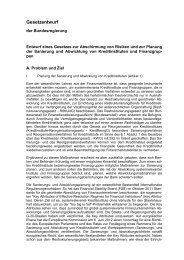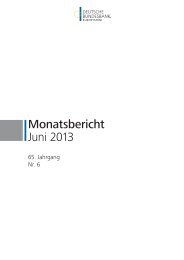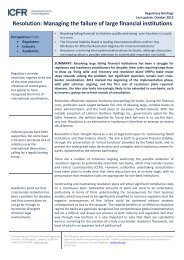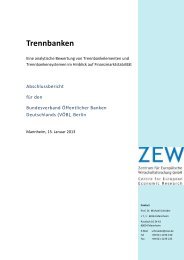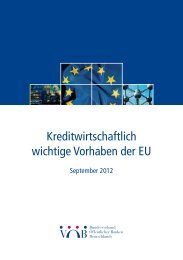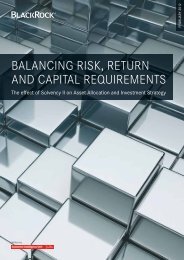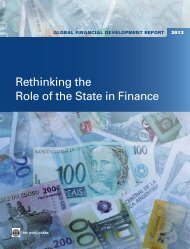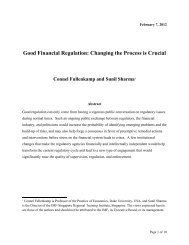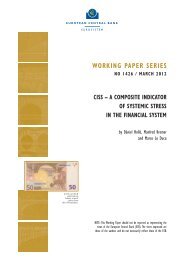3 Issuing costs of state guaranteed bonds - Financial Risk and ...
3 Issuing costs of state guaranteed bonds - Financial Risk and ...
3 Issuing costs of state guaranteed bonds - Financial Risk and ...
You also want an ePaper? Increase the reach of your titles
YUMPU automatically turns print PDFs into web optimized ePapers that Google loves.
Annex 7 Linking Bloomberg <strong>and</strong> Bankscope data<br />
Annex 7 Linking Bloomberg <strong>and</strong> Bankscope data<br />
Information on parameters which relate to bank performance was downloaded from the<br />
BankScope.<br />
BankScope <strong>and</strong> Bloomberg do not share a common bank identifier. In light <strong>of</strong> this, the discussion<br />
below describes the process followed to link the two databases.<br />
Bloomberg identifies the issuer <strong>of</strong> a bond through two different fields:<br />
172<br />
Eqyid<br />
Shortname<br />
Eqyid refers to the issuer’s parent equity, <strong>and</strong> so relates to a higher organisational level than what<br />
may be an issuing subsidiary. Shortname is a 16-digit abbreviation <strong>of</strong> the bank’s name.<br />
Shortname was chosen as the appropriate link between the two databases on several grounds.<br />
There are 470 unique shortnames in the bond issuance dataset as opposed to only 334<br />
eqyids, which shows that shortname is the least aggregated <strong>of</strong> the two identifiers (some<br />
shortnames necessarily refer back to the same eqyid);<br />
189 eqyids are numbers which do not <strong>of</strong>fer any information <strong>and</strong> would lead to poor<br />
matching with the BankScope database <strong>and</strong> consequently attrition <strong>of</strong> the dataset.<br />
As there are no common identifiers, linking the Bloomberg <strong>and</strong> BankScope databases was based<br />
on the bank names. Shortname from the Bloomberg database was the input in the BankScope<br />
search engine <strong>and</strong> the results were investigated manually. In the case <strong>of</strong> several results for the<br />
same bank appearing, the result in which the latest data was made available was chosen. In case<br />
several bank names appear in the list <strong>of</strong> results, a bank was chosen if other information from<br />
Bloomberg identified it convincingly. Information such as country or eqyid were helpful in<br />
combination with information from company websites, etc.<br />
213 banks that issued <strong>bonds</strong> eligible for <strong>state</strong> guarantees were matched with banks in BankScope.<br />
A further 43 banks were matched, but the <strong>bonds</strong> issued by those institution were not eligible for<br />
<strong>state</strong> guarantee. Six institutions were not matched.<br />
Database considerations<br />
The BankScope database was chosen for the bank-specific data because it <strong>of</strong>fers information at a<br />
level which is lower in the group hierarchy, than the Bloomberg database whose issuer identifier<br />
may be related to the parent <strong>of</strong> the actual issuer.<br />
Some <strong>of</strong> the BankScope variables are, however, incompletely populated. To address this problem,<br />
Bloomberg information for comparable variables was downloaded at the potentially more<br />
aggregated eqyid-level. Unfortunately the Bloomberg variables are even less populated <strong>and</strong><br />
therefore the BankScope information is kept for the analysis.



